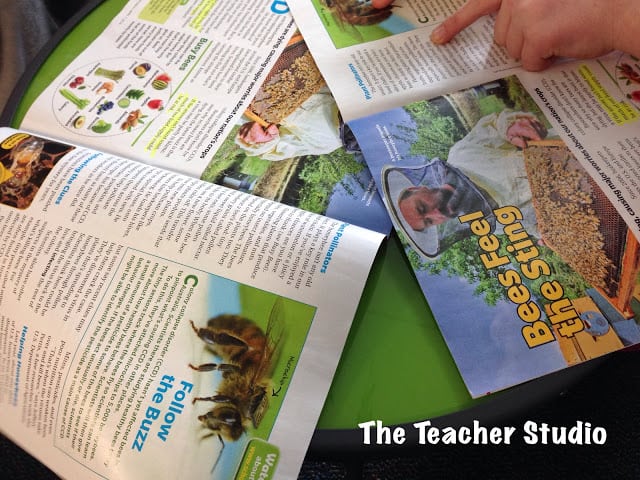Greetings! Just thought I’d share a little more of the beginnings of our informational text reading unit…I think some students had some nice “a ha” moments today! We started off by partner reading some “easy-to-read” content-related human body books. We are studying the circulatory system, and I told the students that today we were going to try to “read to learn” and find some new information about how writers actually write informational texts. I wanted to keep reinforcing the idea that when we research, we need to take our learning and “jot” notes in our own words…and that we need to be constantly thinking about what information is important enough to include in our own writing. I asked them to work with a partner to read, then flip the book over and try to write down some of the information they felt was key–two different facts, to be precise.
Everyone got to work (several noted how “easy” the text was) and then worked to try to decide what information was most important and how to explain it in their own words. I watched them struggle with both parts, so I brought them back together as a class.
I asked them to try to explain where they were struggling. Some students commented that ALL the facts seemed important. Others said that it was hard to put the sentences in their own words because “They seem perfect the way they are in the book.”
We talked about the reading level of the text–and how when writers write for children they make decisions about what information is MOST important–so they were right! Every sentence WAS super important because the author had whittled away the extra. We then looked at a much more advanced text on the same topic and worked together to read a section and noticed that we would really have to think hard if we were deciding what was most important in that text.
We then did a quick review of the text structures we had studied earlier this year…from compare/contrast, to chronological, to cause/effect, to description, to problem/solution. We looked back at the simple text we had read in pairs and realized that really the only “structure” it had was that it was a list of important facts–one per page.
I told them that those easier books are a great way to get a quick overview of a topic, but to really learn NEW information, we were going to have to push ourselves. I had them get back into their partnerships and read a key article from Scholastic News and try to identify how that author organized the text–and to see what information was included to help the reader learn more. I asked them to highlight information they thought was interesting and useful, and we came back together to do some sharing. As they shared information, I kept a running list (that I kind of wiggled to be the way I wanted!) and we ended up with the following:
*Key facts
*Statistics
*”Expert” opinions
*Sections/headings
*Real world examples
*Definitions and key words
*Clever titles
I then sent them back to use their highlighter to see if they could identify more of these “tools of the trade” and explained that these would be great things for us to keep in mind as we research–and that we might want to incorporate them into our own writing as we go.
The students were pretty excited to “read like an author” and start to see what they will be doing over the next few weeks! More work and sharing ahead!








